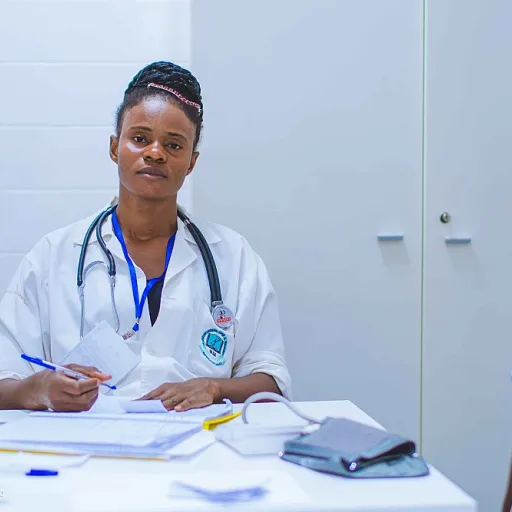
Understanding the Importance of Continuous Learning
Why Continuous Learning is Essential
In a rapidly changing world, the need for continuous learning cannot be overstated. The drive for knowledge and skill enhancement is essential across all professional fields, including the niche of sexual assault prevention and response within the military. This dynamic landscape demands individuals who are not only well-versed in their initial training but who also actively seek new information and methodologies.
For those involved in sexual assault prevention and response, continuous learning is crucial. It ensures that all brigade and army personnel are equipped with up-to-date knowledge, from understanding the nuances of unrestricted reports to offering effective victim support services. Additionally, mastering current strategies in sexual assault reporting and prevention can significantly impact the effectiveness of response programs.
The military, including both active duty and national guard members, benefits extensively from well-established training programs. Such programs often involve collaboration with civilian and law enforcement agencies, further illustrating the importance of a shared knowledge base. Continuous learning within these programs leads to a more robust and competent response prevention system, ensuring that victims, including those seeking protective orders or access to medical services, receive appropriate assistance from specialized units such as the victims counsel or special victims units.
Ultimately, an ongoing commitment to learning fosters improved command capabilities and enhances the readiness of the army, allowing military police, safe helpline operators, and other essential personnel to effectively execute their roles in sexual assault prevention and response.
The Role of Joint Staff Training in Sexual Assault Prevention
The Crucial Involvement of Staff in Sexual Assault Prevention
In addressing issues of sexual assault within military environments, joint staff training emerges as a critical strategy in fostering a culture of prevention and response. The aim is to equip every brigade and army unit with comprehensive knowledge and practical skills. This helps maintain a safe and respectful environment for all members, both civilian and military, hence reinforcing the importance of continuous learning. Recognizing the sensitive nature of sexual assault cases, specially designed training programs focus not only on prevention but also on the effective response to incidents. The training covers aspects such as proper identification, reporting channels, and support systems for victims. These include maintaining access to medical services and safe helpline resources, both of which play a pivotal role in ensuring victims have the necessary support. Moreover, the involvement of diverse stakeholders, including special victims counsel and law enforcement, underscores the multi-pronged approach to addressing assault cases effectively. In particularly complex situations, services such as the provision of a protective order are vital to the victim's safety. It’s important to acknowledge that training within the National Guard and military police is tailored to ensure a coordinated assault prevention and response strategy. National programs incorporate both restricted and unrestricted report protocols, ensuring that victims can report incidents with confidence in the system's ability to handle them appropriately. Exploring Opportunities: For anyone looking deeper into the dynamics of joint staff training on sexual assault prevention and response, it’s valuable to explore opportunities in computer science internships that offer insights into effective program development. Learning from other fields can enhance understanding and the effectiveness of military training initiatives, reflecting the broader impact of continuous learning on professional development initiatives.Response Training: A Critical Component
Understanding the Crucial Role of Response Training
In the realm of sexual assault prevention and response, response training stands as a vital pillar in ensuring effective management and support for victims. In both the military and civilian sectors, prompt and proficient responses to incidents of sexual assault can significantly alter outcomes for those involved. The need for specialized training becomes more evident when considering the unique settings within which these responses occur. In the military, for instance, a comprehensive response training program is not just about understanding how to facilitate an unrestricted report or a restricted report, but also how to navigate the specific protocols and chain of command. Military police, national guard units, and army brigades need to be equipped with the right tools to execute response prevention measures while ensuring victims have access to essential services. This means incorporating training modules that cover assault forensic techniques, access to safe helplines, and understanding how to issue protective orders to safeguard victims. Moreover, response training in sexual assault cases demands an understanding of the available resources, such as special victims counsel and national support services. These are indispensable for guiding victims through the legal and emotional landscapes post-assault. Army sexual assault programs, for instance, often collaborate with civilian agencies to ensure a holistic protective environment and to bridge any gaps that might arise. Programs like these showcase the importance of stringent training, addressing critical areas such as how DOD safe initiatives are carried out to minimize harm and maximize safety. When response training is well designed, it not only enhances reporting mechanisms but also significantly contributes to prevention efforts by fostering a more aware, informed, and prepared environment. For more insights into how continuous learning plays a role in enhancing skills for responding to such critical issues, check out this blog post on enhancing skills with BlueVolt CEU. The content underscores the significance of ongoing education and its impact on professional development, mirroring the objectives of an effective response training strategy.Challenges in Implementing Effective Training Programs
Overcoming Barriers in Training Implementation
Implementing effective training programs within the military, specifically those addressing sexual assault prevention and response, is fraught with challenges. Successfully navigating these obstacles is crucial for creating a safe environment for both military members and civilians associated with the military community.
One significant challenge is the integration of comprehensive training across various branches, such as brigades, the National Guard, and other military units. This requires coordinated efforts among command leaders and ensures that training programs are consistent and effective. In many cases, accessing medical and legal services within the training is hindered by logistical constraints and the diverse needs of each unit. Despite these challenges, the goal remains to ensure prompt access to support services and accurate reporting mechanisms for victims.
Additionally, variations in the level of priority assigned to sexual assault prevention at different command levels may impact the overall effectiveness of training programs. Command leaders must consistently emphasize the importance of response and prevention to foster a culture that prioritizes victim support and safety. The establishment of protective orders and access to services like the Safe Helpline can provide vital support, yet they require robust training frameworks to be effectively utilized.
The implementation of unrestricted reporting and restricted reporting mechanisms is another hurdle. Balancing the need for a victim's privacy with the requirements for thorough reporting and response is a delicate task that requires precise training for military police, law enforcement, and special victims' counsel. The integration of such programs into national response initiatives is essential for aligning military training with broader assault prevention strategies.
Continuous learning plays a pivotal role in overcoming these challenges, as highlighted by the emphasis on professional development within military training frameworks. By addressing these barriers and incorporating best practices in program development, the DoD Safe training initiatives can significantly enhance the effectiveness of the Army's sexual response strategy, fostering an environment of trust and accountability.
The Impact of Continuous Learning on Professional Development
The Influence of Ongoing Education on Professional Growth
Continuous learning is a pivotal element in the field of sexual assault prevention and response, especially within the military and civilian command structures. By engaging in regular educational initiatives, such as joint staff training on sexual assault prevention and response, professionals can vastly improve their understanding and handling of complex scenarios. Professionals involved in these programs, including brigade commanders and military police, benefit from enhanced skills that directly influence their ability to respond effectively to cases of sexual assault. By maintaining rigorous and current training schedules, these members can provide impactful support to victims through established channels like the DOD Safe Helpline and victims counsel. Moreover, the impact of continuous learning reaches beyond individual skill enhancement. It significantly contributes to building a cohesive and informed environment in which all participants, including those from the army and national guard, have access to unrestricted reporting mechanisms and protective orders. This readiness ensures a swift response to incidents, thus reinforcing safe and supportive environments for victims. Through continuous education, military and civilian personnel can stay aligned with evolving protocols and standards in assault prevention and response, drawn from both national and international best practices. This ongoing development not only aids in mitigating the challenges highlighted earlier but also fortifies the commitment of every responsible entity in providing adequate services to victims. In summary, continuous learning fosters a culture of excellence and preparedness, offering professionals in the field enhanced capabilities and insights that are crucial for effective sexual assault prevention and response programs. For more information about innovative approaches to training and development, exploring resources like digital coaching hubs can be immensely beneficial.Future Directions in Joint Staff Training
Innovative Approaches to Joint Staff Training
As we look to the future of joint staff training in sexual assault prevention and response, it's crucial to consider innovative approaches that can enhance the effectiveness of these programs. The integration of technology, such as virtual reality simulations, can provide realistic scenarios for military personnel and civilian members alike, offering a safe space to practice response techniques and improve decision-making skills.
Collaborative Efforts Across Sectors
Collaboration between military and civilian sectors, including law enforcement and national organizations, can lead to more comprehensive training programs. By sharing resources and expertise, these partnerships can strengthen the overall response and prevention strategies. For instance, involving special victims counsel and victims' services in training sessions can provide valuable insights into the needs of victims and the best practices for support and reporting.
Enhancing Accessibility and Support
Future training programs must also focus on accessibility and support for all members of the military community. This includes ensuring that resources like the DoD Safe Helpline and access to medical and legal services are readily available. Additionally, promoting awareness of restricted and unrestricted reporting options can empower victims to come forward and seek help without fear of reprisal.
Continuous Evaluation and Improvement
Finally, continuous evaluation and improvement of training programs are essential. By regularly assessing the effectiveness of current strategies and incorporating feedback from participants, organizations can adapt to changing needs and emerging challenges. This ongoing process of learning and adaptation is key to maintaining a robust and effective sexual assault prevention and response program within the military and beyond.












